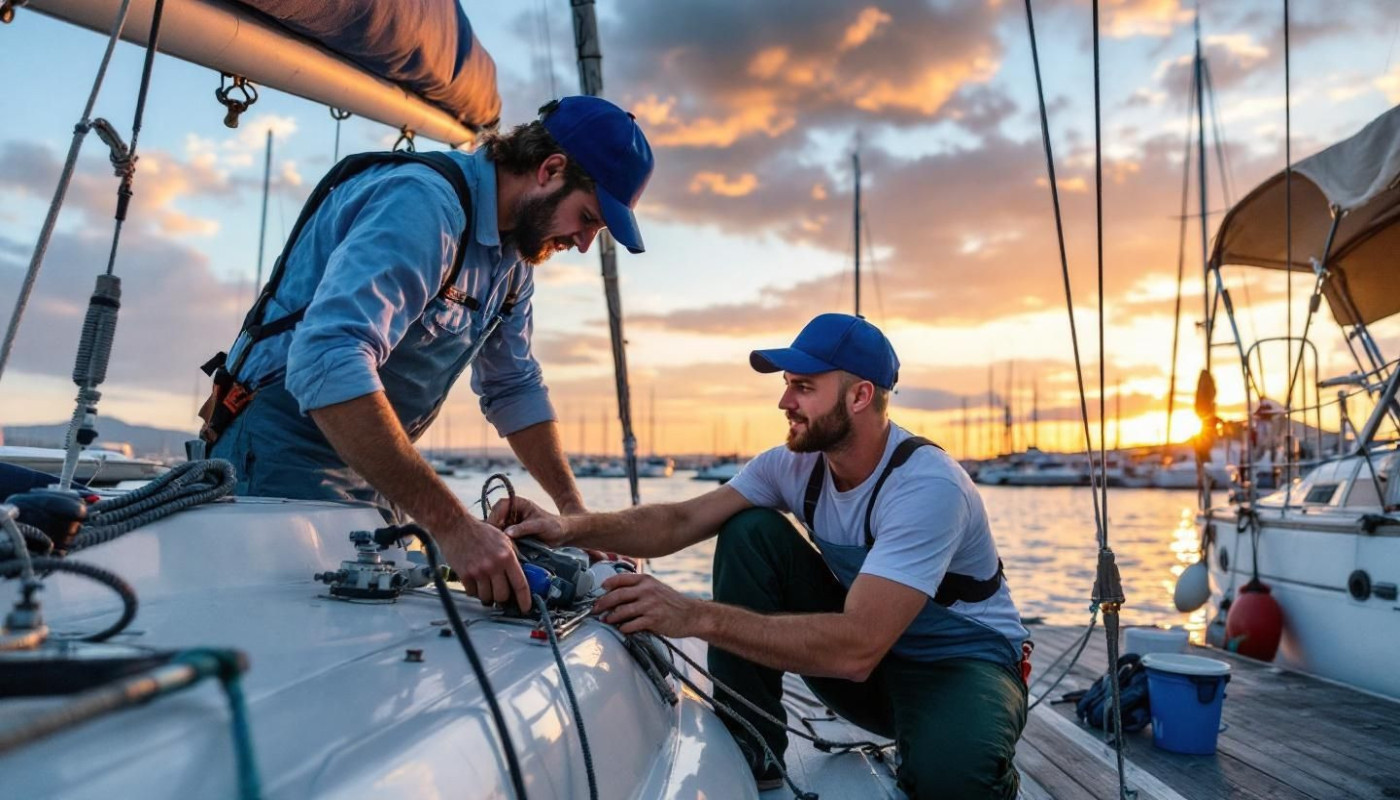Table of contents
A well-prepared packing list sets the stage for an unforgettable sailboat adventure. Knowing what to bring can make all the difference between smooth sailing and unexpected obstacles. Get ready to uncover the must-have items and expert advice that ensure your voyage is comfortable, safe, and stress-free.
Packing for unpredictable weather
When preparing your boat trip packing list, adaptability is key, as sea weather often shifts without warning. Equipping yourself with sailing essentials such as moisture-wicking clothing and waterproof gear ensures comfort and safety. Opt for breathable fabrics in base layers to manage perspiration and regulate body temperature. Quick-drying layers are indispensable, as they prevent discomfort from dampness and help maintain warmth. Including a quality waterproof outer shell protects against sudden rain or spray, while hats and gloves shield you from wind and cold during brisk conditions. Effective sailing clothing allows for layering, so you can add or remove items as weather demands, maximizing both protection and comfort. Reliable waterproof gear, chosen specifically for the marine environment, will withstand the rigors of life at sea, making it a cornerstone of any comprehensive sailing essentials checklist.
Safety equipment you must bring
For boat safety on any sailing checklist, assembling the right emergency gear is vital. Every sailor should pack a properly-fitted personal flotation device for each crew member, complying with local maritime regulations. Alongside regulatory requirements, include items that enhance safety: a functional EPIRB (Emergency Position Indicating Radio Beacon) for global distress signaling, handheld VHF radios, flares, and signal mirrors to maximize visibility in critical situations. First aid at sea demands a comprehensive first aid kit equipped for marine environments, with supplies to manage cuts, burns, seasickness, and allergic reactions. Emergency rations, such as high-energy food bars and potable water, are recommended to handle unexpected delays or isolation. Practical additions like thermal blankets, a whistle, waterproof headlamps, and a well-maintained fire extinguisher further increase security beyond the basic mandates.
Understanding the distinction between what is required by maritime law and what is advisable for maximum preparedness can be lifesaving. While authorities may only enforce carrying basic personal flotation devices and minimal signaling tools, seasoned sailors often augment their emergency gear with redundant communication devices and backup navigation aids. These supplementary preparations ensure comprehensive readiness for a range of scenarios, from mechanical failures to medical emergencies. Always verify the functionality and expiration dates of safety equipment before departure, as well-organized supplies can make all the difference during unpredictable events at sea.
Provisioning food and water smartly
Efficient provisioning for sailing begins with a thoughtful approach to food storage on boats, as space is always at a premium in the galley. Prioritize non-perishable foods such as canned vegetables, dried pasta, rice, grains, and vacuum-sealed proteins, since these items offer sailing nutrition without the risk of spoilage. Galley organization is a key component—store foods in stackable, airtight containers to maximize every inch of available space and prevent moisture intrusion. For hydration, calculate the daily water supply boat requirements by multiplying consumption needs (typically at least 3 liters per person per day) by the number of crew and planned days at sea, while also factoring in reserves for cleaning and cooking. Meal planning is vital: prepare a menu that balances nutrient-dense foods, easy-to-cook meals, and variety, adjusting for storage limitations. Rotate older provisions forward and keep a detailed inventory to avoid overpacking or missing crucial staples, ensuring safe and enjoyable journeys on the water.
Personal care and hygiene on board
Maintaining boat hygiene during a sailboat adventure requires thoughtful planning and adherence to best practices. Selecting biodegradable toiletries not only supports the marine environment but also helps prevent water pollution, which is vital when using a marine head for sanitation. Since freshwater can be limited, compact quick-dry towels are suggested for both bathing and daily use, allowing for efficient cleaning and space-saving storage. To shower at sea, many cruisers use solar-heated shower bags or rinse off with saltwater before a final freshwater rinse, maximizing water conservation. Each crew member should be responsible for their personal hygiene but also contribute to keeping shared spaces—like galleys and heads—clean to ensure a pleasant experience for everyone aboard.
Efficient waste management is a key aspect of sailboat living tips, especially over longer journeys. Always dispose of gray water responsibly and use marine sanitation devices as required by local regulations to avoid contamination. Storing used tissues, wipes, and sanitary products in sealed bags protects the marine environment and keeps the interior fresh. For more guidance on outfitting your vessel for extended voyages and finding sustainable charter options, visit the Home Page, where you’ll discover a range of resources dedicated to comfortable and environmentally conscious cruising.
Navigation and entertainment essentials
When preparing for a sailboat journey, sailing navigation tools are paramount, starting with reliable nautical charts, updated waypoints, and sturdy compasses. Marine electronics such as GPS plotters, handheld VHF radios, and depth sounders enhance precision and safety on open waters. These devices should always be cross-checked with traditional maps for accuracy, as electronic systems can fail. In addition, carrying redundancy in navigation equipment, like backup batteries or solar chargers, guarantees continued navigation if technology falters. Choosing the right tools means smoother passage planning and safer course corrections, especially when weather or currents demand swift decisions.
Boat entertainment is just as vital for maintaining morale and engagement during long stretches at sea. Compact books—such as sailing manuals or engaging novels—offer both education and relaxation, while small, waterproof games provide activities at sea that foster camaraderie among the crew. Striking a balance between core navigation tools and entertainment options ensures that every moment onboard is both purposeful and enjoyable. Making space for leisure items alongside essential sailing gear enriches the overall experience, transforming downtime into opportunities for learning, laughter, and shared stories beneath the open sky.
Similar articles








